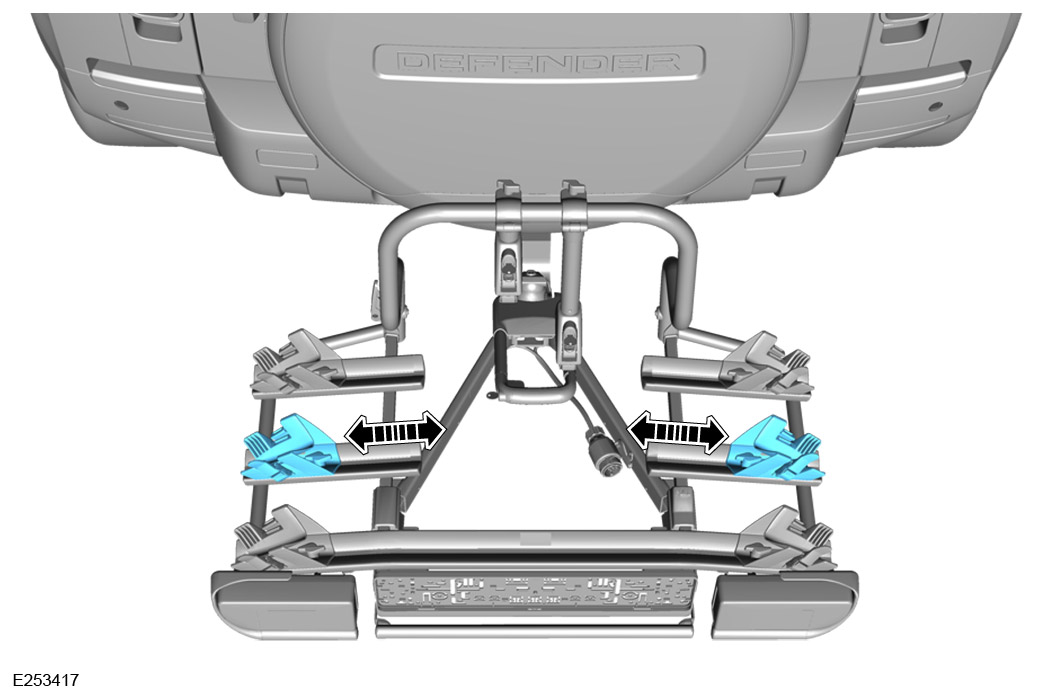
Adjust the extendable wheel holders to match the size of the cycle being transported. Make sure the cycle wheels do not overhang the cycle carrier wheel holders.
- Loosen the thumbscrews a few turns on the extendable wheel holder.
- Adjust the position of the extendable wheel holder.
- Tighten the thumbscrews on the extendable wheel holder.